MO Tested: Arai XD4 Helmet Review

An ADV lid from the land of the rising sun
Maybe it’s the millennial in me, but I’ve always appreciated Arai helmets for the privately owned company’s history and the fact that the lids are handcrafted in Japan. Use the word “heritage” and/or “handmade” and you’ve got the attention of my generation. The thing is though, with Arai, they don’t need to rely on hip marketing to entice interested parties. The proof is in the pudding, as they say, and Arai has been serving it up thick since the 1950s. Arai lids can be found on the heads of the world’s most elite racers from MotoGP to Dakar and even in the less interesting four-wheeled sports like F1 (I kid, I kid).
Arai XD4
| Aesthetics | 9/10 | Protection | 9/10 | Comfort | 9/10 |
| Value | 8.25/10 | Weight | 7.5/10 | Innovation | 8/10 |
| Quality | 9.25/10 | Options | 9/10 | Weather | 9/10 |
| Desirability | 9/10 | Editor Score: 87% | |||
+ Highs
- Arai quality
- Good ventilation
- Versatile
– Sighs
- Wish it came with a Pinlock-ready shield (and a Pinlock insert
- Not the lightest helmet in the genre
- The XD4 is getting a little long in the tooth
What’s New?
The Arai XD4 replaced its predecessor (the XD3) back in 2012 and has gone largely unchanged since. When the XD4 hit the market, Arai claimed a better ventilation system including slight changes to diffusers throughout the helmet and a new shield with brow vents for better ram air cooling effect. The XD4’s internal padding allows for additional adjustment, giving users the ability to decrease the foam thickness by 5mm on the cheek pads and sides of the crown. Emergency quick removal tabs are also included for cheek pad extraction in the instance of the unfortunate.
In addition to all of that, the helmet’s shell shape has also been slightly changed and is now offered in five shell sizes (XS, SM, MD-LG (same shell), XL, and XXL) to ensure the smallest, lightest helmet possible.
In 2018, we’re told the peak received slight aerodynamic changes, the internal fabric was upgraded to match that of the Corsair, and anti-fog coated shields with a few tint options were made available.
First look
At a glance, the first thing you’ll notice is the quality of the finishes and/or graphics. The Vision graphic of my helmet has a matte finish with a hint of metal fleck throughout. The graphics are tastefully layered, and while I would use the word perfection considering the other two Arai helmets that I own, a direct look at the front of my XD4 shows asymmetrical graphics (something I hadn’t noticed until the helmet was sitting on my desk as I typed up this review).
Grabbing the XD4 off the shelf – depending whether or not you’ve checked out other helmets on the market – you might notice the XD4’s weight next. In terms of heft, the Arai slots itself right in the middle between the three adventure helmets I’ve been using as of late, weighing in at 3 lbs 9.9 oz (1641 g). The other helmets, a Klim Krios and Shoei Hornet X2 tip the scales at 2 lbs 15.7 oz (1352 g) and 3 lbs 15 oz (1786 g), respectively. Considering the entire crop of helmets including on-road, off-road, and in-between, the XD4 is not the lightest helmet by far, but also not nearly the heaviest.
Arai helmets sold in North America meet both DOT and Snell M2020 tests. Achieving the Snell certification requires a penetration test that – in every instance I’m aware of – adds weight (and often rigidity) to the helmet. The XD4 shell is made from hand laid carbon and fiberglass layers with Arai’s proprietary resin blends, but the helmets sold Stateside will be heavier than those found in other markets.
Slipping the helmet on, you’re reminded of why everyone talks about the comfort of Arai helmets. They tend to have pillowy, cushy liners that adapt well to slight variances in head shape, making them comfortable to a wide swath of melons, though the XD4 is considered to fit an intermediate oval head shape. As with other modern Arai helmets, the XD4 features cheek and crown pads that can have a 5mm layer of foam removed for custom tailoring the fit.
The XD4 truly is an all-day comfortable helmet that is easy to don and doff. Another feature you’ll notice about the Arai XD4, which is true of most ADV helmets, is the massive eye port. This is one reason, I believe, that adventure helmets have become so popular for everyday use. The peripheral vision from adventure helmets is hard to match. This, of course, also allows the user to wear goggles with the XD4 off-road – most comfortably when the visor is removed.
Considering the Arai XD4 as a do-it-all helmet, it has three configurations that help it excel at the intended use. First, you can wear it as is, peak attached and visor on, leaving you just as ready to tackle the commute to Starbucks as you will be conquering Tierra del Fuego. Second, you can remove the visor, reattach the peak (the same plastic screws that attach the peak attach the visor), and use goggles for riding off-road, à la MX. Third, you can remove the peak and reattach the visor to gain a more aerodynamic setup for street riding that also gives excellent peripheral vision. While this might be a strange or uncommon configuration, I’ve come to notice many urban riders using it. It makes sense and makes Arai’s ADV lid all the more useful which is great for a $740 helmet (Vision graphic).
On the street or down the trail
The recent crop of adventure helmets do a surprisingly good job of being aerodynamic enough to not turn your head into a sail at speed. Do you notice the peak while riding? Yes. Is the XD4 the most aerodynamic adventure helmet I’ve used? No. That said, on everything from naked bikes to adventure touring machines, it hasn’t been such a problem that I regretted using the helmet.
The XD4’s peak does catch some wind, and depending on which motorcycle I’m riding I can find myself teetering between the point of wind catching under it and pulling up or over it and pushing down. On adventure bikes, it’s almost never an issue that bothers me much.
When the road runs out and terrain turns technical, I’ve found the substantial venting system of the XD4 to work quite well. The three large chinbar vents can all be opened and closed, the center of which has adjustability on both the inside and outside of the helmet for fine tuning. Vents on the visor at the brow can be opened to channel air directly to the forehead and the top vents are easily opened and closed with switch-type toggles on the top of the inlets. I did notice that the top forward facing vents worked best when the peak was pushed to its highest position as it seems to almost entirely block them when it’s lower. Two large exhaust vents at the upper back portion of the helmet can be opened and closed in the same fashion. Two lower exhaust vents are found near the bottom of the helmet and a channel to direct airflow out of the helmet is located at the bottom of the neck roll.
The visor itself may be one of my biggest nitpicks on any Arai helmet, really. They all feel flimsy by comparison, and the locking mechanisms on helmets, like the Corsair X, don’t always seem to offer consistent ease of use. That said, I’ve only actually had one issue with Arai shields which was during my time with the Ram-X when the shield fell off in my hand as I attempted to adjust it while riding. Despite the visor not feeling as stout as the other adventure helmets in my stable, it works well and is easy to see through, but (and it’s kind of a big one) both the clear visor and the tinted one I’ve used fog something awful. Arai now offers accessory visors with anti-fog treatments and a Pinlock-ready version (only in clear and the Pinlock insert is sold separately), but with a starting price of $610, I’d like to see the Pinlock ready visor and insert included in the package.
Adventure is booming
In 2012, when the XD4 came to the market, there weren’t as many competitors. The adventure scene was just starting to hot up. Now, in 2021, adventure motorcycling is hotter than ever, and the competition looking to outfit those adventurous domes is nearly as heated.
There are more than 15 helmet manufacturers selling ADV or “dual-sport” lids in the U.S. Despite the XD line’s last “major” update happening in 2012, Arai’s XD4 continues to be a top contender for those in the market – that’s also despite it being one of the most expensive. While there are two ways of looking at it, arguments can be made for the “if it ain’t broke don’t fix it” camp or for those hoping for some innovation. Personally, I’d like to see a lighter XD5 complete with a Pinlock ready shield with the insert in the box. Another look at the aerodynamic properties of the peak could be in order, too. Competition has never forced Arai to take drastic measure,s and the evolution of the XD line is an example of the Japanese company sticking to its approach to what it considers the best way of doing things. For now, I’ll keep wearing my XD4, but I’ll remain hopeful that the next evolution from Arai is just over the horizon of the rising sun.
Arai XD4 Specifications | |
|---|---|
| Colors | 18 various solids and graphics |
| Sizes | XS, S, M, L, XL, XXL |
| Weight (Medium measured) | 3 lbs 9.9 oz (1641 g) |
| Safety Standards | DOT, Snell M2020 |
FAQ
What goggles fit with the Arai XD4?
Any of them! At least any of the brands I have sitting around which include the 100% Racecraft +, the Klim Viper Pro, and the Fly Zone Pro. Goggles fit best with the visor completely removed, though they can be worn without removing the visor, just keep in mind the seal around the rider’s face will not be great for keeping out dust.
What bluetooth communicator fits in the Arai XD4?
Any of them, again! Any modern communicator like the Cardo Packtalk Bold or Sena units should fit nicely within the Arai XD4. The medium helmet I have fits me spot on, and I couldn’t tell a difference in fit or comfort after installing the Packtalk Bold.
What is an adventure motorcycle helmet?
An adventure helmet melds the worlds of street and off-road functionality. An ADV helmet like the Arai XD4 is designed to be tightly sealed for weatherproofing when touring, while offering the ability to be opened up for ventilation like an off-road lid for tackling more treacherous terrain. Like adventure bikes, adventure helmets aim for ultimate versatility.
Additional Resources
We are committed to finding, researching, and recommending the best products. We earn commissions from purchases you make using the retail links in our product reviews. Learn more about how this works.
Become a Motorcycle.com insider. Get the latest motorcycle news first by subscribing to our newsletter here.

Ryan’s time in the motorcycle industry has revolved around sales and marketing prior to landing a gig at Motorcycle.com. An avid motorcyclist, interested in all shapes, sizes, and colors of motorized two-wheeled vehicles, Ryan brings a young, passionate enthusiasm to the digital pages of MO.
More by Ryan Adams



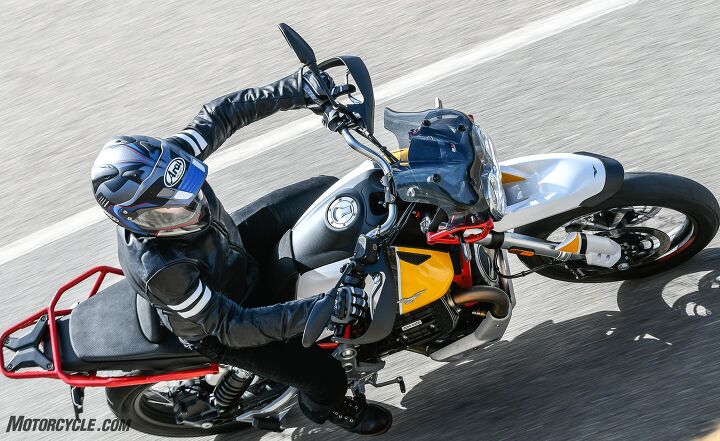


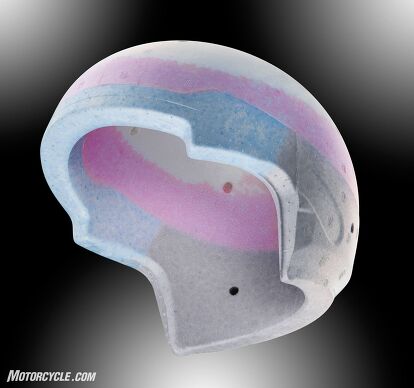



















































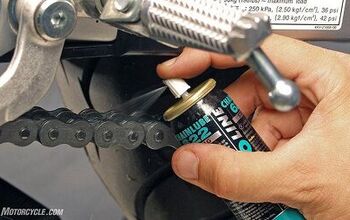
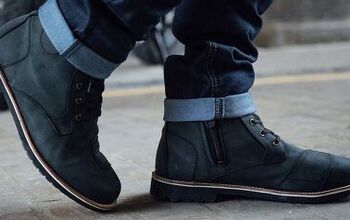
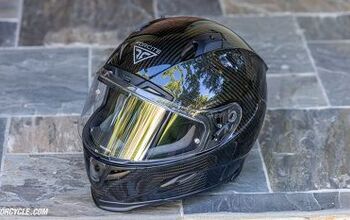
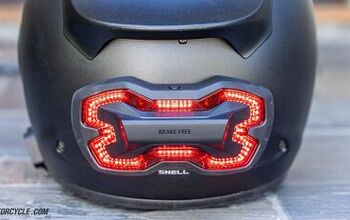
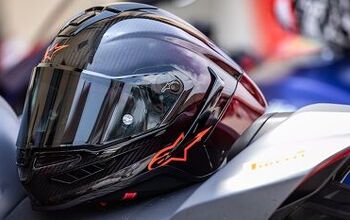












Comments
Join the conversation